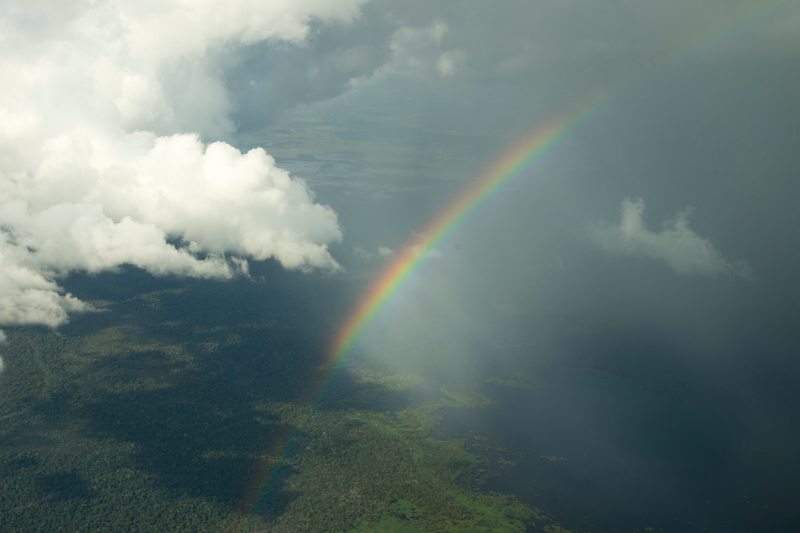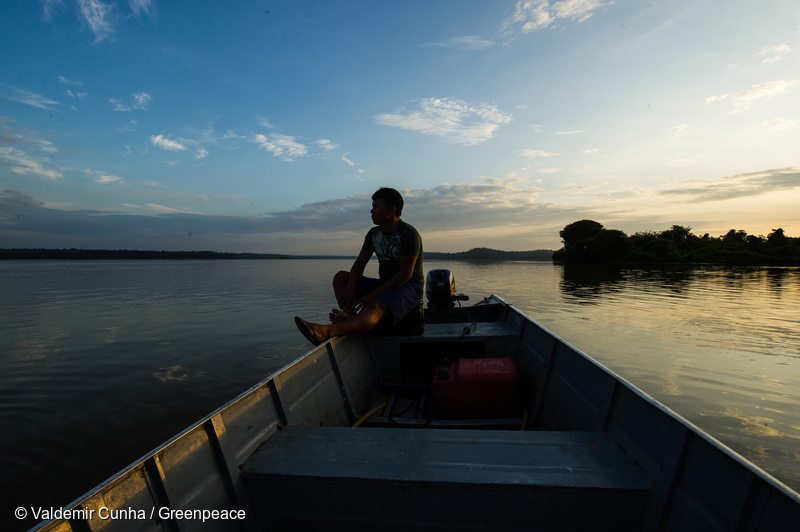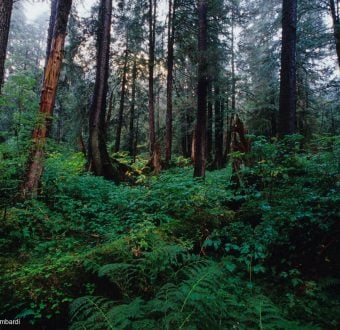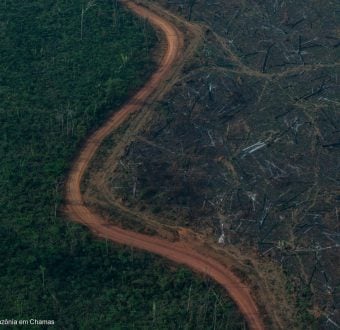The daily rhythm of life in the Munduruku village of Sawré Muybu — on the Tapajós River in the Brazilian Amazon — can lull me into a false sense of calm.
Children play, chasing each other around wooden homes and under lines of drying laundry. Chickens hunt and peck in the grass as guava trees reach skyward on the edges of the well-worn soccer field. Rainforest sounds accompany the scenes — the call and response of birds, the harmonic buzzings of oversized crickets, and the roiling roars of distant howler monkeys.
And then there is the river.
Rivers in the Amazon Basin are of a scale I’m not used to. To my eyes, the Tapajós is a shimmering expanse — a long, wide, flat mirror that reflects the mood of the sky. It often interrupts me, especially at sunrise and sunset, compelling me to stop, gaze, and take it in.
From the sky, things look different. After take-off from the river in an amphibious plane, I first see the canopy of intact rainforest: an uneven mix of greens, greys and even purples and yellows, that surround Munduruku villages.

The Tapajos River in the Amazon Basin, photographed from above.
Then I see alien interruptions in the rainforest. Logging roads.
Like cuts in the canopy. And starker still, swaths of bright red dirt with cloudy pools — like open sores in the forest — from mining.
The piles of felled trees I see along logging roads may have been illegally cut from Munduruku territory, there’s no way to tell from the sky. Either way, logging is not supposed to be taking place in Munduruku land or the national forest that surrounds it. When it does, it’s like too much logging in Brazil — illegal or laundered timber.
The mines I see, mostly to extract gold, are suspect as well.

Mining in the Tapajos region, near Munduruku territory. Photo by Rolf Skar / Greenpeace.
Illegal gold mines are common in this area, and even the ones with official permits have an impact larger than their physical footprint on the land. That’s because miners here use toxic mercury, which they bind with gold in a slurry of water and soil, to increase their haul. Mercury-gold clumps are removed from water, then heated to vaporize the mercury, leaving the gold behind.
Once in the air, mercury is inhaled by miners and others nearby including children. Mercury that gets into the soil and water accumulates in animals where it changes into methlymercury, a potent neurotoxin. Methylmercury easily accumulates as it moves up the food chain. Here on the Tapajós, that food chain includes the fish that are a staple of the Munduruku diet.

Woman cleaning fish by the shore of Cururu River, a tributary of the Tapajós.
Frontier loggers and miners feel threatened by efforts to oversee them and enforce the law. Like others involved in shadowy enterprises, they would rather not be watched or confronted. When they are, they often resort to threats, violence, or even murder. The Munduruku must live with this risk when trying to protect their land.
These problems alone would be enough to challenge a community. But, bad as they are, they are dwarfed by a larger existential threat: the proposed Tapajós mega-dam.
Not only would the mega-dam mean forced relocation of Munduruku as waters permanently submerge villages and rainforest, and not only would it forever alter the flow and health of the river, but it would create a devastating domino effect of deforestation and disenfranchisement.
The mega-dam would be a battering ram opening up the heart of the Amazon — including the Munduruku’s home — to colonization and exploitation. As a Munduruku cacique (chief) recently told me: the mega-dam would bring “great sickness” to his people.

Construction of the Belo Monte Dam on the Xingu River, a similar sized project to the one proposed for the Tapajos.
But the Munduruku are fighting this dam — and asking for your help.
That’s why Greenpeace staff and volunteers are on the Tapajós helping the Munduruku take control of their land.
And we need you to help us show the Brazilian government that the world is watching. Together, we can urge the companies that would profit from mega-dam construction — and the human rights abuses and deforestation that would go with it — to do what is right and keep the Tapajós free, flowing, and alive.



